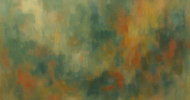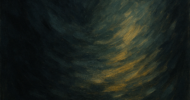“I am the one who knocks … I am not in danger, I am the danger … Play in a rage …”
While the first two quotes may be better attributed to the former high-school-chemistry-teacher-turned-drug-dealer Walter White in AMC’s hit show Breaking Bad, that final quote is reminiscent of my former collegiate defensive line coach, one of my greatest mentors and inspirations as I set my closing sights on becoming a doctor.
In the Spring semester of my final year as a football player, my college team faced necessary coaching, staff, and player position changes. At this point in my college career, we had yet to have a winning season. These changes were made to shift our program’s culture and give us new life going into the upcoming Fall season. My new position coach, our team’s former linebacker coach, greeted us all in the defensive line room during our very first Spring position meeting with a stark message that, to this day, has changed my way of thinking about the hardships, especially now as a medical student during the COVID-19 pandemic.
During his message, he put up the Japanese symbol kiki (危機) on the overhead screen and questioned if any of us in the meeting room knew its meaning. As my teammates and I looked at each other thinking, what the heck is this guy up to … our coach informed us the symbol is written in kanji and translates to “crisis.” (We thought he was only foreshadowing the imminent torture we were about to face that Spring as we prepared to change the trajectory of our program.)
There was more to his message than that, we found out. If you look closely, kiki is composed of two separate kanji, which each have their own unique meaning vital to the moral of my coach’s message and this reflection. The first symbol (危) represents “danger” or “dangerous,” while the second symbol (機) represents “opportunity.” These meanings have been touched on in literary blog posts and discussed amongst linguists over the years. However, the consensus is that these translations do hold to be valid, granting much strength to what my coach was demonstrating to my teammates and me.
Now, if you could not tell from the introductory quotes, all of which my defensive line coach embraced during the time I got to work with him, the man may have had some screws loosened secondary to his days as a football player. Having said this, he is a man with a big heart who truly loves his college and the players he coaches.
His message to us, then, was this: In crisis, danger and opportunity are present. So, we can either run away from the danger (not the correct answer … again, see the first line of this reflection) or run towards the opportunity (correct answer) and embrace the crisis. While neither myself nor my coach (I believe) are masters in deciphering the intricate meanings of kanji, this message nevertheless shed a new light towards my perspectives on facing tough times.
Not only is medical school an arduous task to overcome, but the additive effect of the COVID-19 pandemic has made these past fifteen months an absolute bear for any medical student to overcome. But, as we can see from the National Resident Matching Program’s (NRMP) 2021 Main Residency Program data, nearly 95 percent of PGY-1 resident match positions were filled, making this past year’s Match the largest in NRMP history. Even within the cumulative crisis of medical school and COVID-19, many medical students have risen and boosted their efforts to achieve their goals as physicians.
Medicine is tough — there is no doubt about it — and medical training may be the quintessential example of crisis. This data suggests that medical students are continuing to embrace the underlying opportunities within, and we should continue to encourage and push each other to do so. The words of my football coach do reign true in medicine. We are not in danger; we are in crisis, where opportunity exists.
Casey Paul Schukow is a medical student.
Image credit: Shutterstock.com






























![Better dizziness diagnosis through skilled exams [PODCAST]](https://kevinmd.com/wp-content/uploads/Design-3-190x100.jpg)

